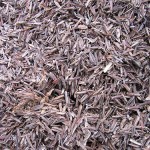Sep22
Saachi & Saachi CEO on Creating Loyalty During Recession
Point: Tough economic times call for different brand messaging
Story: We’re in a time of new frugality, said Kevin Roberts, CEO of Saachi & Saachi, at a recent HSM webinar. People are evaluating their purchases more closely. They’re comparing more products and contemplating switching brands more often. They will still buy luxuries, but they’ll buy fewer luxuries; and, they’re redefining what luxuries are. They’re separating true value from false economies. Roberts suggested three strategies that companies can use to keep their products and services on a customer’s “buy” list in an era of less buying.

First, companies can reframe the competition and the category. In the era of new frugality, many people are eating out at restaurants less and eating at home instead. Some companies see parallels in this inside/outside phenomenon to redefine their place in the market. For example, P&G compares its premium-priced Tide Total Care with the cost of dry-cleaning, not with other cheaper detergents. P&G is reframing the category, positioning its detergent as a frugal way to achieve clean clothes in the home without the high-cost of dry-cleaning outside the home.
Second, companies can help consumers use products in a more cost-effective way. For example, in a similar spirit of saving its customers money, Tylenol’s new ad campaign offers advice that helps customers ease the pain of a headache — without taking a Tylenol product. Tylenol suggests that if you have a headache, drink a glass of water and wait 20 minutes. If you still have a headache, then take Tylenol. Although the campaign may lose Tylenol some sales, the ultimate goal is to side with the customer and win in the long run. Empathsizing with the need to save money, Tylenol suggests a solution that can save customers money while remaining the brand of choice for tougher headaches.
Third, be honest and highlight the value if you can’t decrease the cost. If your product truly is a premium-priced luxury, don’t pretend that it’s a cut-rate necessity. Be honest. Customers still want joy in their lives, and they’ll still treat themselves to an occasional luxury. Rather then make a luxury seem cheap, highlight what makes it more special and more meaningful. The product may not cost less, but the emotional bonus makes it more valuable.
Action
- Reframe your product’s category (e.g., detergents competing with dry cleaners)
- Offer useful advice on cost-effective use of your product
- Enhance the emotional value of your product
For More Information:
Kevin Roberts will be presenting at the World Business Forum in New York City on October 6-7, 2009.
Kevin Roberts is the author of Lovemarks: The Future Beyond Brands
and The Lovemarks Effect: Winning in the Consumer Revolution










